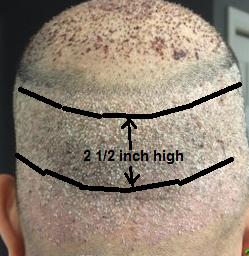Little more than a decade ago, men afflicted with enlarged prostate glands — which can block urine’s flow and lead to dangerous infections — had essentially one treatment option: surgery. Now, drugs can often be used to reverse benign prostate enlargement. These so-called prostate pills are available thanks in no small part to a Caribbean population of pseudo-hermaphrodites.
In the early 1970s, Dr. Julianne Imperato-McGinley, an endocrinologist at Cornell Medical College, traveled to a remote mountain village in the Dominican Republic to study a group of children with a unique condition.
The sex of the children was ambiguous at birth, but to the best of the villagers’ knowledge they appeared to be girls, and so they were raised as such. But at puberty the girls’ baby fat gave way to muscle, their voices grew deep, testes descended and penises grew. The condition — which affected about 2% of the region’s children — earned the nickname guevedoces, or “penis at 12.”
The “girls” developed into adult men with all the expected physiological traits, save a few: The guevedoces men had minimal facial and body hair, unyielding hairlines and prostate glands that stayed unusually small. They also had low levels of the male sex hormone dihydrotestosterone (DHT), despite normal levels of testosterone.
Ultimately, Imperato-McGinley and colleagues traced the condition to a genetic mutation that caused low levels of the enzyme 5-alpha reductase, or 5AR.
Without 5AR, a body won’t make DHT. And without DHT, hair doesn’t sprout on the face, arms or legs, baldness stays at bay and the prostate doesn’t enlarge. (DHT levels are much higher in the prostate than they are anywhere else in the body.)
That last clinical feature of a 5AR deficiency caught the attention of scientists at pharmaceutical firm Merck & Co., shortly after Imperato-McGinley’s findings were made public. If 5AR’s absence kept the prostate small, they deduced, then perhaps getting rid of 5AR later in life could stop the prostate from becoming dangerously large, as it does in nearly 20% of men older than 55.
Sure enough, a drug to do just that was developed over the next 15 years. Finasteride, a 5AR-inhibitor that ties up 5AR so it can’t convert testosterone to DHT, was approved in 1992. A second 5AR inhibitor, dutasteride, was approved in 2002.
The 5AR-inhibitors are proving to have other important uses too. A study published in 2003 showed that prostate cancer prevalence was reduced by 24% in men who took finasteride compared with those who took a placebo. (For decades, scientists have known that hormones can play a role in signaling cancerous cells to grow.) Investigations are underway to determine if dutasteride (which is more active than finasteride) can reduce prostate cancer risk even further. Finasteride is also widely prescribed for halting male-pattern baldness.
The guevedoces, meanwhile — and populations like them in Turkey, New Guinea and elsewhere — continue to pique the interest of researchers. They’ve revealed dozens of mutations that can affect 5AR, but they’ve also been of interest to psychiatrists and sociologists struggling to tease out the interplay of hormones, environment and culture in gender identity.
Gender, the guevedoces appear to have proved, is not always black or white.

